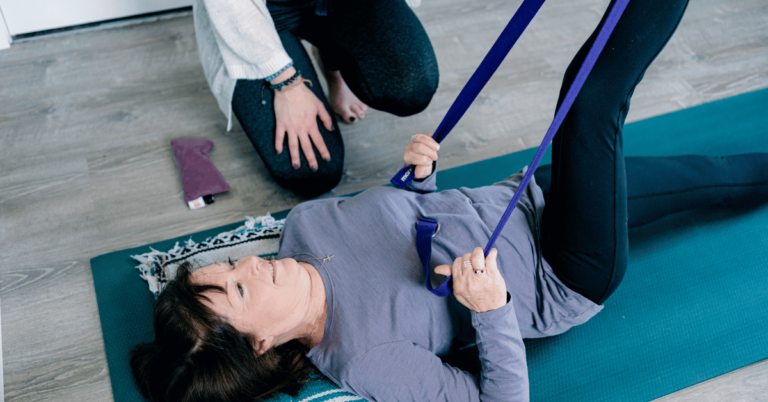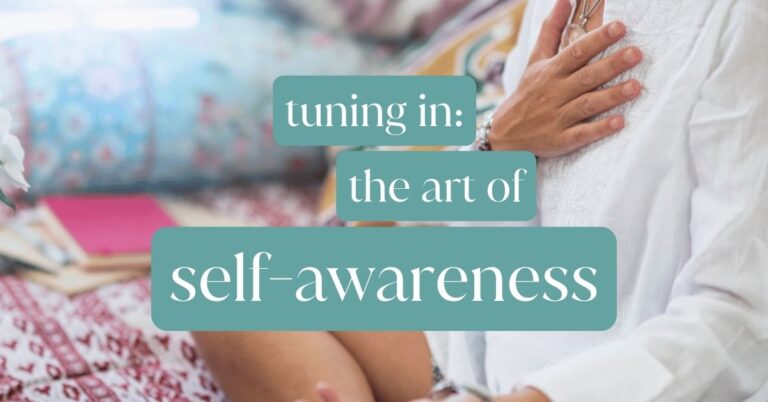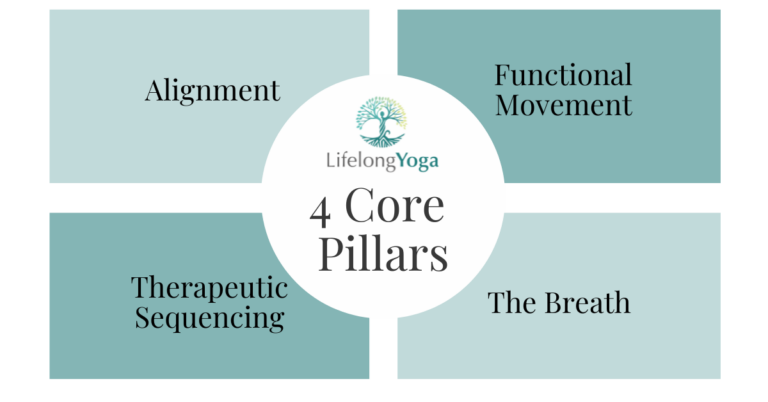What is Yoga Therapy? (And How it Can Help You)
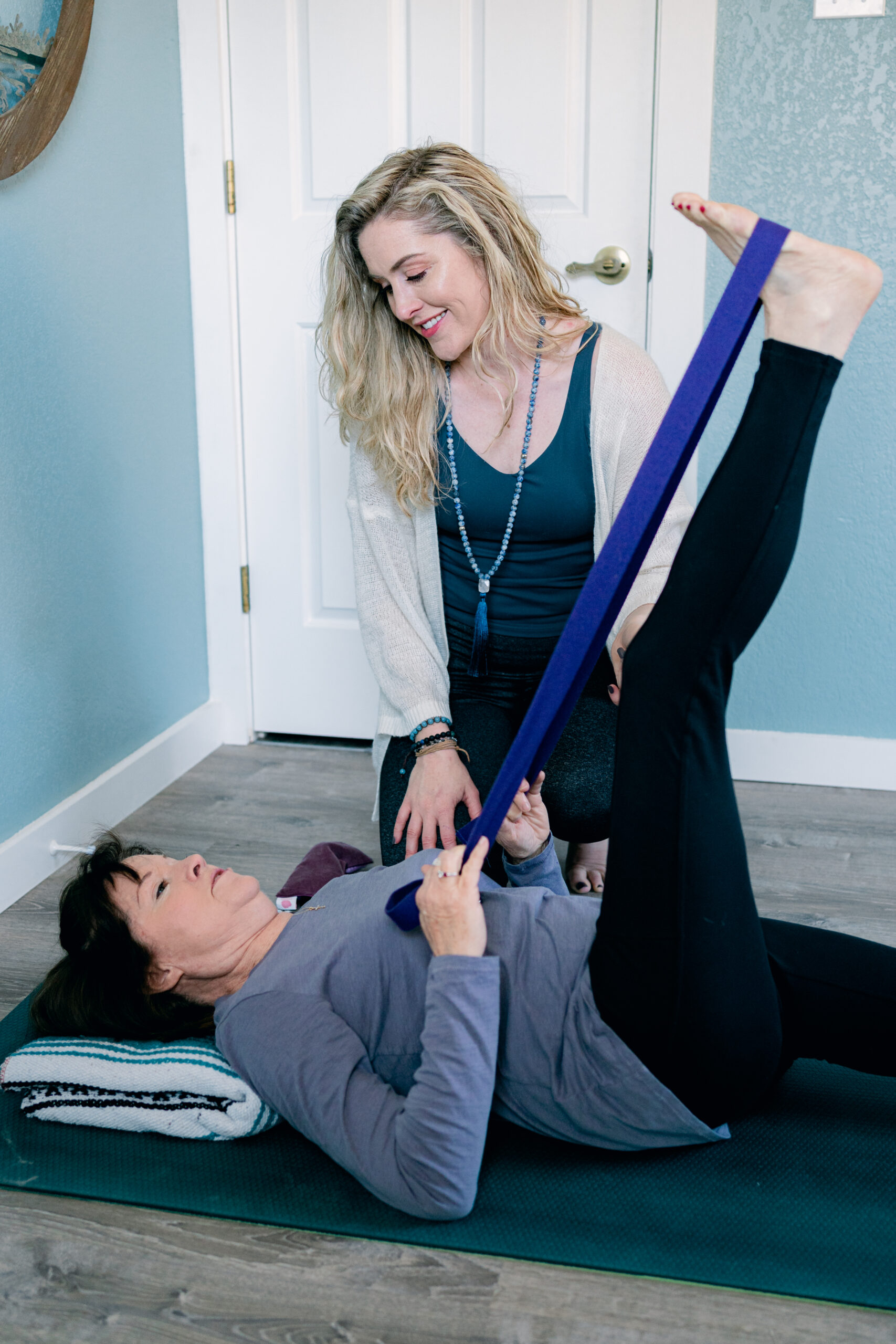
Wondering what yoga therapy is, what a yoga therapy session involves, and if yoga therapy might be helpful for you? Here’s all the information you need to know – and how to get started.
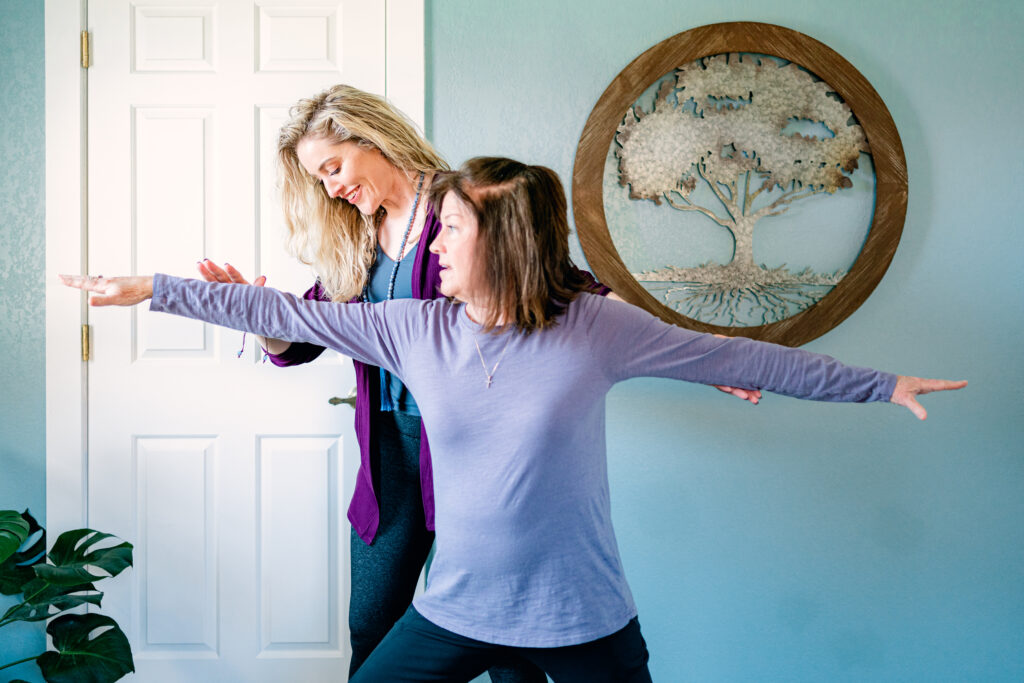
What is yoga therapy?
As a growing number of people seek out alternative treatments to address their health concerns, yoga’s popularity has accordingly grown. More and more, doctors and medical professionals are recommending yoga to their patients. This is where yoga therapy enters the picture, bridging the gap between the field of wellness and the profession of healthcare.
Yoga therapy uses the tools of yoga to help individuals facing mental, emotional, or physical health challenges find optimal health and wellness and support them on their path to healing.
These evidence-based yoga tools can include:
- Movement (ranging from gentle to vigorous)
- Meditation and mindfulness practices
- Breathing techniques
- Physical yoga postures that address specific areas of discomfort or musculoskeletal imbalances
- Lifestyle suggestions rooted in yoga’s philosophy
- Any combination of tools like these!
Yoga therapy is not about curing disease; it’s about whole-person (mind, body, and spirit) health and well-being.
What is the difference between a yoga class and yoga therapy?
Yoga therapy happens one-on-one or in a very small group. The whole goal is to design a yoga practice that is just right for you and your specific health conditions and challenges. No worrying about if you can or can’t do something. (As opposed to a yoga class, which can also be therapeutic but does not necessarily seek to tailor a practice just for you.)
A yoga therapy session:
- Begins with an extensive intake process (including health history to structural assessment)
- Is tailored specifically to you and your goals
- Includes a home plan of care
- Is led by a certified yoga therapist
Who is a yoga therapist?
A certified yoga therapist is a yoga teacher who has taken extensive additional training in physiology, in-depth anatomy, psychology, biomedicine, yoga tool adaptation methods, and has completed extensive clinical practicum.
The skill level and education to offer yoga therapy as a C-IAYT (a Certified Yoga Therapist with the International Association of Yoga Therapists) requires hundreds of training hours from an accredited yoga therapy program.
Your yoga therapist is uniquely qualified to support you in your journey to healing.
How can yoga therapy help you?
A yoga therapy session is a great way to address your personal mental, physical, or emotional health concerns, manage pain, work through trauma, rehabilitate an injury, or build strength, balance, and flexibility.
There is evidence that when consistently practiced, yoga therapy can have significant effects on an increased sense of well-being, including: improved mood, decreased stress and chronic pain. (See yogatherapy.health for growing list of research articles about the proven benefits of yoga therapy for specific populations.)
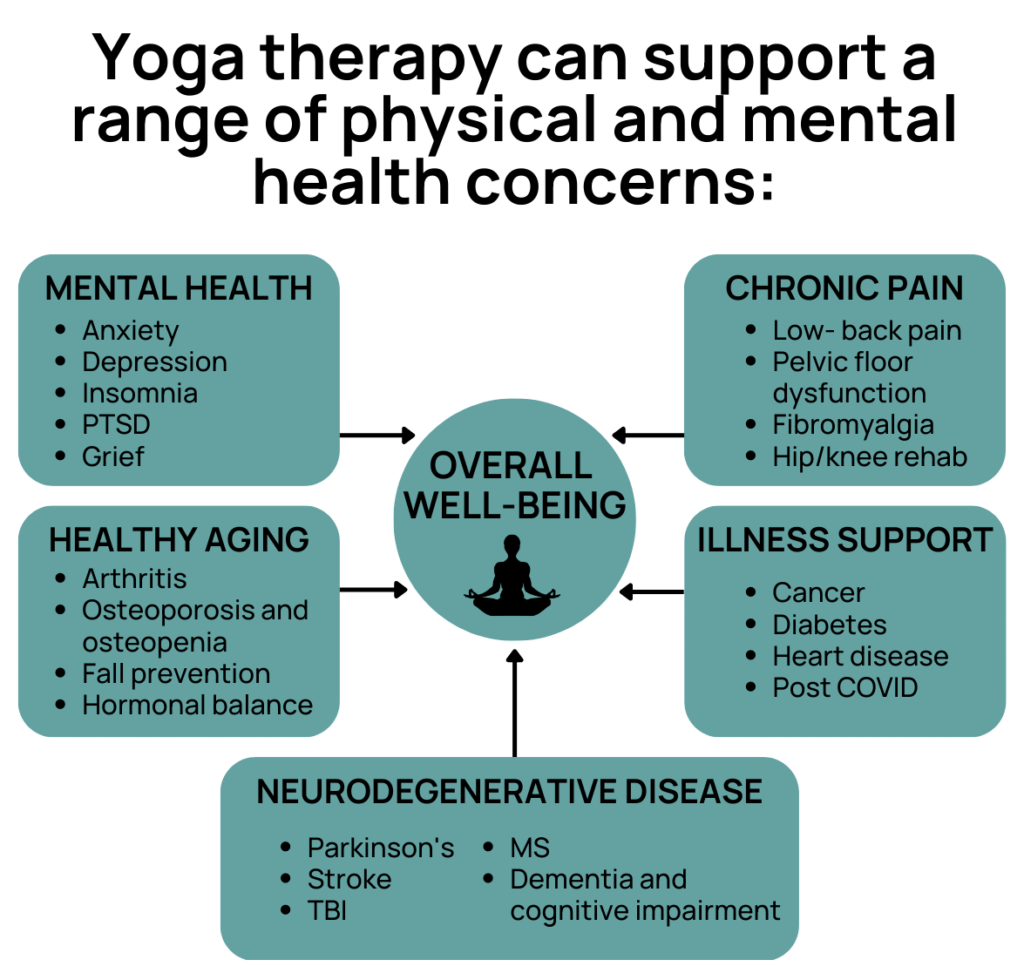
*Yoga therapy is not a replacement for medical care. Yoga therapy is a form of complementary medicine meant to provide support in addition to (not instead of) your primary forms of medical care. Yoga supports your health, but yoga therapists are not responsible nor do we assert to diagnose, treat, heal and/or cure mental or physical disease or illness. As with all exercise, be sure to be cleared to practice yoga by your doctor or a certified health professional.
What is a typical yoga therapy session like?
Wondering what to expect? Here’s the exact process I follow with my clients for the initial yoga therapy session.
1. The intake form
The first session with a client begins with a review of your personal history form, which you’ll fill out before we meet so I can learn more about you and your needs. This helps me get a full picture about what’s going on with you on all layers—physically, energetically, mentally, emotionally, and spiritually—not just the pain or other issue that might have brought you to yoga therapy, though I do ask about that, too. We’ll spend some time going over the form and discussing your goals.
2. The assessment
Then we will begin the initial assessment. I will guide you through some simple movement and breathing practices to assess your strength, flexibility, and balance, as well as your habits of body and mind.
3. The practice
The evaluation leads into a yoga practice. This can vary depending on the client and how you show up that day because it’s always tailored specifically for your body and your needs. The practice could include a combination of yoga postures, breath techniques, mindfulness practices like a body scan, or meditation practices.
For example, if you’re experiencing arthritis or joint discomfort, I might offer a short joint-freeing sequence and then a few yoga poses that could create greater awareness of the muscles supporting the joints. The yoga poses can also be chosen in order to cultivate certain qualities, such as warrior poses to build confidence or a supported forward fold to create a sense of safety. We’re always working with the whole person, all layers of your being, not just one aspect. To end the session, we’ll usually spend some time with breath awareness and gentle restorative movement before segueing into guided visualization and relaxation.
4. Next steps
We’ll discuss your plan for moving forward, whether that includes additional regular yoga therapy sessions or an occasional follow-up session as you implement your home plan of care.
A home plan of care is basically your yoga homework that will be sent to you after your session. These are suggestions to do daily to create change and lead you closer to your goals. Sometimes the home plan of care consists of short “yoga bites” that you can easily fit into your day (like a breath technique to try while you’re stuck in traffic) or sometimes it’s a full 20-30 minute yoga practice. It all depends on you and how much time you’re currently willing and able to commit to your yoga practice.
Want to try yoga therapy?
Yoga therapy is for everyone who wants optimal health and wellness. If you are looking for something to help support you through the healing process, or simply to get to know yourself better and evolve into the best version of you, then yoga therapy is going to be a powerful tool in your life.
I offer virtual yoga therapy sessions online via Zoom (as well as in-person at my yoga therapy office in Granbury, Texas) so you can try yoga therapy no matter where you live. If you’d like to try yoga therapy, you can read more about my sessions and apply here.


